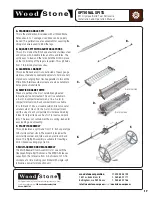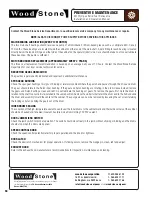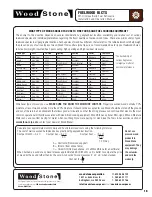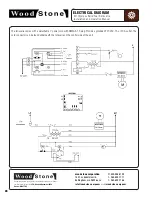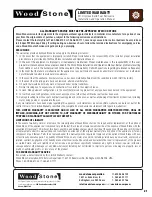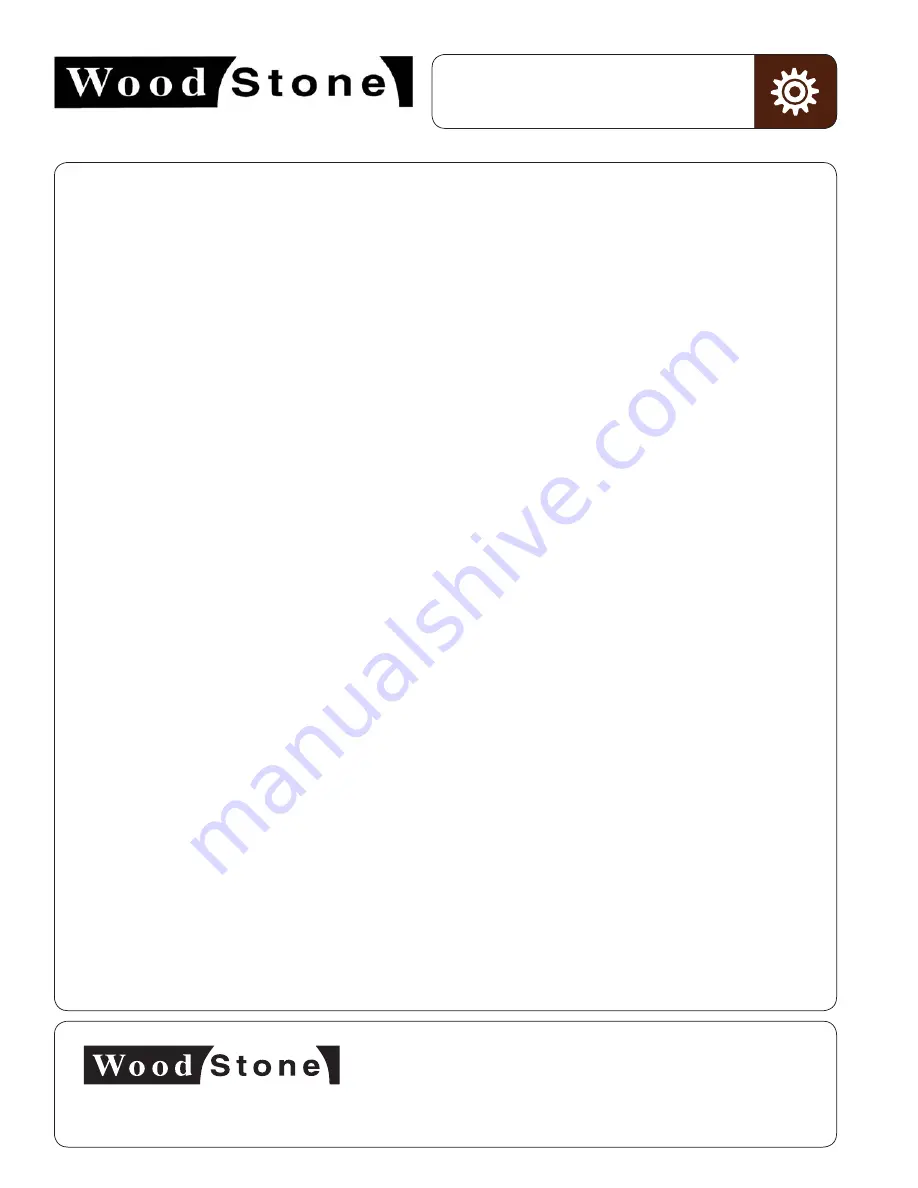
16
Mt. Olympus Solid Fuel Rotisserie
Installation and Operation Manual
CLEANING THE ROTISSERIE
An ongoing program of product improvement may require us to change
specifications without notice.
SFR, Revised November 2014.
Doc no: M0057.02
info@woodstone-corp.com
or visit
woodstone-corp.com
wood stone corporation
1801 w. bakerview rd.
bellingham, wa 98226 usa
tf. 800.988.8103
t. 360.650.1111
f. 360.650.1166
ROTISSERIE CABINET
All exposed surfaces of the rotisserie should be wiped clean as necessary (or daily) using an approved mild cleaning solution.
Be careful not to get excess liquid into the controller or the main power switch. Stubborn residues may be removed using a non-
metallic scouring pad. When scouring stainless steel, scrub with the grain to avoid scratching the finish.
ACCESSORIES
All rotisserie attachments (spits, forks, basket pins) should be cleaned between uses using an approved mild detergent, hot water
and an approved sanitizing solution. Alternatively, these items can be cleaned in a dishwasher.
CHARBROILER
If your rotisserie has the extended firebox/charbroiler, scrub the cast iron grill grates (as necessary) with a wire brush to remove
cooked-on build-up. The stainless steel grill support rack can be removed and cleaned using hot water and an approved mild
detergent.
CERAMIC FIREBOX
Remove excess ash from the firebox using the stainless shovel provided with the rotisserie.
NEVER POUR WATER INTO THE
CERAMIC FIREBOX.
We recommend removing excess ash in the morning, after the fire has died down through the night.
ROTISSERIE CABINET FLOOR
Perform cleaning while the rotisserie is still hot, being careful of the resultant steam. Make certain the drain valve is open. Begin
by rubbing down the rotisserie bar with a soapy towel. Keep the GREEN rotation button depressed so the drum continues to turn.
Then wipe the cabinet floor, directing the soapy water and grease down the grease trough, out the drain and into the grease drip
container. Rinse with clean water.
GREASE CONTAINER
Below the loading doors, you will find the grease drip container on casters (this should be checked frequently). There is a brass
valve that shuts off the flow of grease from the cabinet. The valve must be closed in order to remove the grease drip container. Be
sure to remember to re-open the valve after the container has been cleaned and put back into its place.
EXHAUST HOOD
Refer to the exhaust hood manufacturer’s recommendations for inspection, maintenance and cleaning.
CREOSOTE: FORMATION AND NEED FOR REMOVAL
Creosote should be removed to reduce risk of fire. When wood is burned slowly, it produces tar and other organic vapors that
combine with expelled moisture to form creosote. The creosote vapors condense in a relatively cool oven flue and exhaust hood of a
slow burning fire. As a result, creosote residue accumulates on the flue lining and exhaust hood. When ignited, the creosote makes
an extremely hot fire. The oven flue should be inspected twice monthly to determine when creosote build up has occurred. When
creosote has accumulated, it should be removed to reduce risk of fire.
















